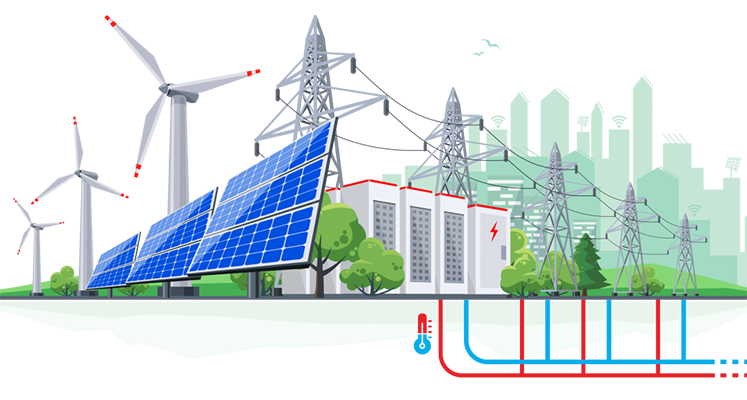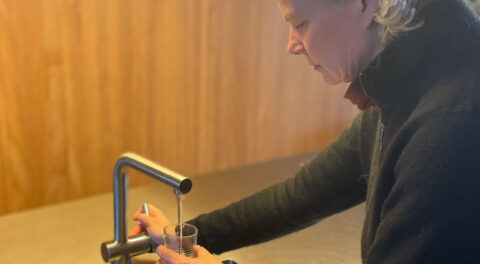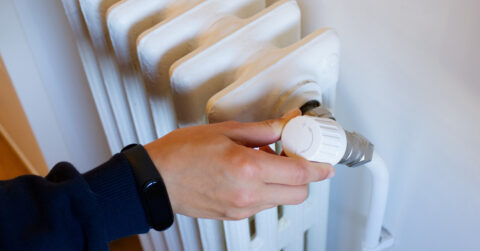With existing techniques, it is possible to make the Netherlands climate neutral by 2050. Even if citizens' behavior "does not change substantially," this ultimate goal from the Climate Act can be achieved. This is the conclusion reached by researchers at the Netherlands Environmental Assessment Agency (PBL) in a comprehensive report.
In new research, PBL calculates over thirty techno-economic pathways to a climate-neutral Netherlands with a similar economic structure as now. Postponing or excluding options in advance makes achieving climate neutrality in the Netherlands in 2050 almost or even completely impossible. It is not a question of either-or, but of and-and. Given the uncertain availability of energy sources and technologies, all building blocks are useful and necessary, including more controversial options such as the use of biofuels,CO2 capture and storage (CCS) and adaptations in agriculture and rural areas.
"On the drawing board, it's actually pretty straightforward," says PBL Director Marko Hekkert, who himself is pleasantly surprised by this. According to the study, if the Netherlands deploys the right "workhorses" on a large scale, it could succeed in adding no more greenhouse gases to the atmosphere in a quarter of a century. That's not easy, however: climate neutrality requires "a societal transformation of unprecedented magnitude."
Switch to electricity where possible
Electricity is the workhorse of the climate transition. In cost-optimal paths to a climate-neutral Netherlands in 2050, electricity production will grow by a factor of three to five. Over half of the energy will come directly or indirectly from solar, wind and nuclear power. Energetically, it makes sense to use electricity instead of fossil fuels whenever possible. But air and sea shipping cannot be electrified: here carbon will continue to be needed as a feedstock for bunker fuel production, as in the chemical industry. Here, biofuels (3 to 6 times as much as today) and hydrogen will become the necessary replacements for today's fossil energy carriers.
Biomass with CCS in power generation not obvious
The use of biogas feedstock withCO2 capture and storage (BECCS) is often thought of as capturingCO2 emissions at biomass plants for power generation. However, this option is not obvious. The scarcity of sustainable biogas feedstocks requires higher-value deployment than direct combustion for controllable electricity production. Other sources exist for this, while no alternatives exist for the production of advanced biofuels for aviation and shipping. Moreover, the production of these bunker fuels produces a relatively pure stream ofCO2 from plants running full time. Capture of this nearly pureCO2 is much more energy-efficient and cheaper than capture from flue gases of biomass plants with a much lower concentration ofCO2, which moreover will only run sporadically to meet peak demand.
Availability of bio feedstocks and hydrogen are bottlenecks
The supply of sustainable biofuels and green hydrogen (from renewable electricity) will need to multiply. Scaling up production and logistics in the short term is urgent. But in the period up to 2050, these indispensable substitutes for fossil fuels will remain scarce anyway. The scarcity will lead to high prices, making electric alternatives, where possible, more attractive. An international market is likely to emerge for green hydrogen. By increasing its own generation capacity for renewable electricity and building electrolysers for hydrogen production, the Netherlands will become less dependent on it. But that will also require more labor and materials, which may also be scarce. These preconditions have not been specifically examined. If the availability of biofuels and hydrogen is disappointing, climate neutrality in the Netherlands in 2050 will become considerably more expensive or even impossible due to changes in the use of energy and raw materials. Climate neutrality will then only be feasible through moreCO2 storage or a different lifestyle that uses considerably less energy and raw materials.
Climate neutral by 2050 does not necessarily mean fossil-free
A climate-neutral Netherlands in 2050 does not have to be fossil-free. In most calculated cost-optimal trajectories, some fossil fuel is still used, the emissions of which are offset within the Netherlands. Complete phase-out of fossil fuels requires specific policies and increases demand for scarce biofuels and hydrogen. Lower fuel demand and more sustainable heat do make the Netherlands less vulnerable to disappointing availability of biocarbons and hydrogen. To replace fossil raw materials for plastic production, high-quality recycling of plastics is crucial, due to the limited availability of bio-based raw materials. Reuse also limits and delaysCO2 emissions that would otherwise be released when plastics are bandaged.
Negative emissions necessary
To achieve climate neutrality within our national borders, negative emissions are necessary: capture and storage ofCO2 from biosolids (BECCS) to compensate for difficult to avoid emissions in agriculture, among others. The trajectories assume an annual 20 to 50 megatons of CCS by 2050 [out of an estimated total storage capacity under the North Sea of 1,700 megatons]. This offsets residual emissions from agriculture and land use, remaining fossil fuel use and waste incineration, among other things. The residual emissions from rural areas would disappear only if livestock numbers were reduced by more than three-quarters along with large-scale forestry, something that was not part of the trajectories studied
Integral view is key
It is very important to consider the energy and resource system holistically. For example, from the perspective of the built environment, it seems attractive to wait for green gas or green hydrogen, which require few modifications to homes. But the scarcity of renewable gases will be high due to demand from sectors where no alternatives exist. That is likely to drive up the price so much that any cost advantages for the built environment will evaporate and heat networks and heat pumps will become the most attractive options anyway. At the same time, eliminating even the last bits of emissions from a sector may be more expensive than offsetting them elsewhere. It is good to take this into account when setting sectoral targets.
Climate neutrality requires policy acceleration
The pathways calculated assume a linear decrease in emissions between the legal goal of 55 percent reduction in 2030 and climate neutrality in 2050. This achieves nearly 80 percent reduction by 2040. In February, the European Commission proposed a European goal of 90 percent emissions reduction by 2040. What exactly that would mean for the Netherlands is still unclear. Many of the calculated trajectories are in line with existing European policy. For the period after 2030, a lot of additional policy will be needed in all cases to achieve the required scaling up. It is important that a clear policy for negative emissions is quickly established. These still fall outside the ETS, as a result of which the capture ofCO2 from biogenic feedstock is not rewarded and projects for future capture and storage of biogenic emissions do not get off the ground.












